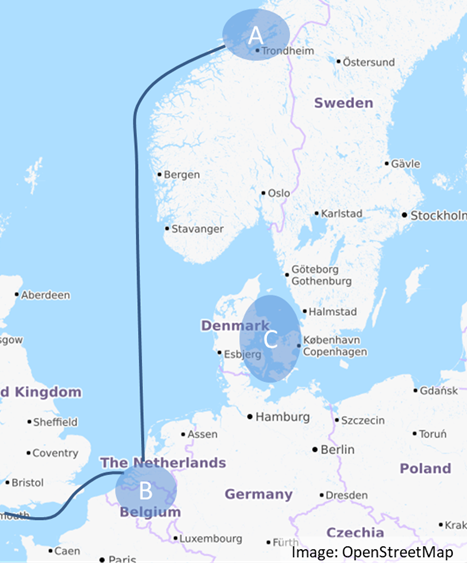Aviant joins the cluster!
We welcome Aviant to the Ocean Autonomy Cluster! Aviant is an innovative drone service company that...
The SINTEF-led AEGIS project will develop automatic logistics solutions for sea and inland waterways. About NOK 32 million goes to Norwegian participants.
The need for greener transport, strain on road systems, traffic noise and dust makes transport by sea and rivers interesting as an alternative to trucks. However, the transition from road freight to shipping is developing slower than desired in both Norway and the rest of Europe.
The European Commission has therefore supported the project “Advanced, Efficient and Green Intermodal Systems” (AEGIS) with NOK 80 million to show that autonomous ships and automated ports can make transport on water much more flexible and user-friendly. AEGIS will make Europe’s transport system greener and more robust, as well as facilitating for environmentally friendly and neighborly ports and harbors, including those in cities.
– The funding of the AEGIS project is a recognition and further strengthening of Norway’s leading position in the development of autonomous shipping. The project’s focus on port operations and cargo handling means that it complements other large Norwegian projects, such as the EU project AUTOSHIP, which mainly looks at the ship, says Vegar Johansen, CEO of SINTEF Ocean in a press release (Norwegian).
The Port of Trondheim (Trondheim Havn) is also a participant in the project. Both Port of Trondheim and SINTEF are members of the Ocean Autonomy Cluster.
– AEGIS is a project that is fully in line with our strategy of port development, sustainability and increased transport of goods at sea. For us, it is especially important that this project focuses on the use of smaller and flexible vessels, digitalisation, logistics solutions and port operations. We are really looking forward to work on the AEGIS project, says Terje Meisler, Head of Maritime at Port of Trondheim, in the press release.

– Norway is the global center for innovation and development of autonomous ocean technologies and solutions, and it is inspiring that Trondheim’s cutting-edge environment on ocean autonomy, with key actors such as SINTEF and the Port of Trondheim, are accelerating the much needed transition to more flexible, robust and sustainable transport systems, says Frode Halvorsen, Cluster Manager of the Ocean Autonomy Cluster.
Three test cases
The AEGIS use cases are located in North Europe and represent typical short sea transports that need to be linked to local distribution systems. Case A is led by North Sea Container Lines in cooperation with the the Port of Trondheim. It uses small cargo shuttles to link coastal container ships to rural and urban destinations. Case B is led by DFDS and will link RORO short sea services to inland waterways. Case C in led by Port of Aalborg in cooperation with Port of Vordingborg and will examine how existing ports can use automation to facilitate the transfer of cargo from trucks to sea.
Small ships and inland barges can decongest roads, reduce noise and dust pollution, while operating on batteries or other non-carbon fuels. By automating ports and terminals and use these to integrate larger long distance ship operations with new and smaller ship types, a completely new European transport system can be developed. More flexible and user centric transport, better services to rural as well as urban areas and a revitalization of the regional ports and city terminals is the goal.
We welcome Aviant to the Ocean Autonomy Cluster! Aviant is an innovative drone service company that...
The Norwegian transports company Torghatten has joined the owner side in Zeabus. Now they aim to...
The Ocean Autonomy Cluster keeps growing, and we warmly welcome the leading nationwide public...